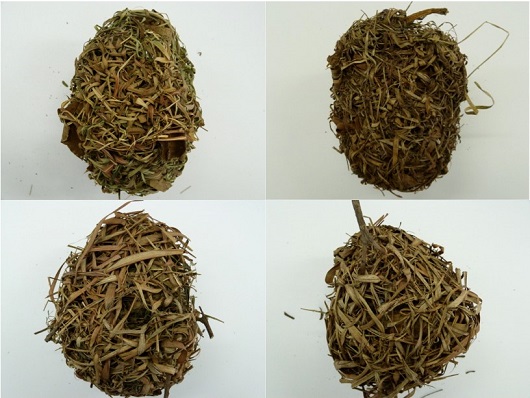Weaverbirds sign their valentines

St Andrews scientists have used computer software to reveal creative individuality among weaverbirds, in a research paper published in the journal Royal Society Open Science today (17 June 2015).
The researchers found that individual weaverbirds produce nests with signature weave patterns, and that distinct construction styles allow individual birds to be identified in the same way that people can be individually identified by their handwriting or by their artistic creations.
Weaverbirds, native to Africa and Asia, get their name from the elaborate nests males construct during mating season; using them to attract prospective mates.
Not only does there appear to be an identifying texture to the weave of an individual’s nest, weaverbirds also appear to be more consistent in their weave pattern than they are in the size and shape of the nests they build.
Dr Ida Bailey of the School of Biology said: “It is very exciting to find such compelling evidence that individual birds have their own weaving styles. Being able to classify nests in this way may, in combination with other data, help us discover if some styles indicate a better nest and are harder for the birds to perfect.”
The team analysed 96 nests in total, from Nigeria and Botswana. All nests were collected after any chicks had fledged.
Using computer-aided image texture analysis researchers were able to uncover variations in surface texture. What they found were repeated fine-scale patterns created on the surface of structures by individual builders.
This is an exciting breakthrough as it not only allows insights into the survival and reproduction of individual birds, particularly when nest texture correlates with features of a nest’s structural properties, but also opens the door for texture analysis approaches to be applied usefully to structural analysis of other animal constructions.
Notes to editors
The paper is available to view on the Royal Society Open Science page.
Category Research